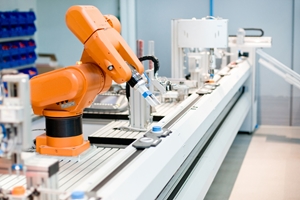
In an effort to improve a business' bottom line and create more revenue to go toward salary and paying for employee benefits, small business owners are always looking for ways in which to improve efficiency. And one of the ways many companies have gone about doing this is by using technology for jobs that don't necessarily need the human touch.
While this strategy seem like a job killer, a new survey suggests that it frequently opens up new employment opportunities, helping to broaden what a company provides to its staff as well as its clientele.
Nearly 7 in 10 companies who have replaced workers with some form of automation said it led to positions being added, according to recent survey data from job search engine CareerBuilder. Additionally, more than one-third of the nearly 2,200 hiring managers, owners and human resource professionals polled indicated that this strategy actually wound up creating jobs functions that weren't established prior to utilizing automation as a replacement.
61 percent of U.S. occupations have grown at least 1 percent since 2002
Automation has been around for a while now. In a separate analysis performed by both CareerBuilder and Economic Modeling Specialists International, nearly 260 occupations have seen a drop in employment since 2002, or 33 percent of all professions in the country. However, during the same time span, close to 485 occupations saw an uptick in employment. Furthermore, the workers in industries that have witnessed a growth in jobs were paid $2 more per hour, on average, than occupations where jobs have contracted.
"Technological advancements have not only increased productivity, but historically have led to an expansion of employment," said Matt Ferguson, CareerBuilder CEO. "While automation may eliminate some jobs, it also creates other jobs that are higher paying and lifts the standard of living for the economy as a whole."
He added that a major challenge that employers have to undertake is preparing their workforce for more "knowledge-based jobs," most of which will become available through the more widespread use of technology and advanced robotics. This is particularly true in occupations that deal with science, technology, engineering and math, or STEM fields.
Across all employment industries, nearly 33 percent of respondents indicated that in the next 10 years, they anticipated technology replacing jobs that heretofore were held by people. Roughly 35 percent in the customer service field said it would affect their industry, 33 percent of information technology professionals, and 32 percent of accountants.
A potential avenue that business owners considering automation may want to examine is the human resources department. David Vanheukelom, an enterprise resource planning specialist, told Small Business Computing that by the time a company hires its 50th employee, HR can become difficult to handle without technology serving as the prime manager.
That's not to say that once a job becomes automated it can't go back to what it was before. The CareerBuilder survey found that 35 percent of firms that used automation went back to using people because the technology wasn't as effective as they would have liked it to be.





